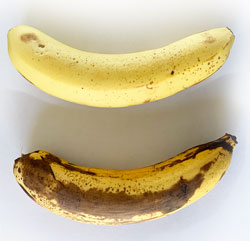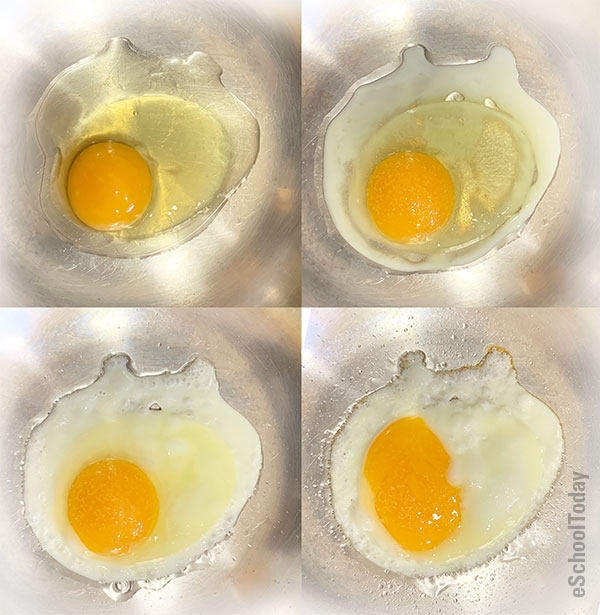- Matter
What is a Chemical Change?
Every day we experience chemical changes in many things around us. Think of a rotten orange, fried egg, rusted nail, and even poop! — all these things involved an object (matter) going through a process that can never be reversed. A chemical process (reaction) caused that kind of change.
 We say there is a chemical change in a matter when the internal make-up (molecules) of the object changes. Unlike a physical change, chemical changes cannot be reversed. Changes that cannot be reversed are called Non-reversible Changes.
We say there is a chemical change in a matter when the internal make-up (molecules) of the object changes. Unlike a physical change, chemical changes cannot be reversed. Changes that cannot be reversed are called Non-reversible Changes.
There are usually one or more new substances formed or created from that change. You can tell there is a chemical change when it produces gas, light, smell, fire (heat), or color change. A chemical change may also be accompanied by the formation of a solid in the form of a precipitate, and in some cases, accompanied by a gain or loss of energy.
A good example is a change that occurs when you fry an egg:

Here is another example:
Think of the dry wood in the fireplace. When we light the wood up, it burns gently and after a while, it turns into ashes. As it burns, it produces heat, light, and smoke which escapes through the chimney. The heat, light, fire, and smoke are all good characteristics of a chemical reaction, which result in a completely new matter—ashes.
Note that the ashes from the burning wood have an entirely new molecular composition. It can never be turned back into wood again.
Here are 10 common examples of Chemical Change you can find in your home.
- Baking cakes
- Rusting nails or metals or aluminum
- Burning wood/log or lighting a match
- Exploding Fireworks
- Ripening and rotting bananas
- Digesting food in your tummy
- Mixing an acid with a base, producing water and a salt
- Baking turkey or grilling chicken
- Changing color of autumn leaves
- Milk going/gone bad…
IMPORTANT NOTES:
When we eat, our bodies digest the food and convert sugars into energy, proteins into body cells, and so on. When we breathe, our lungs absorb oxygen from the air we breathe in and uses the oxygen to enrich our blood. All these activities in our bodies are chemical activities. Their results can not be reversed.
Can you think of ten more?
Reading sources:
Our reading and research on this lesson included these resources below:
1. BBC Bitesize resources., www.bbc.co.uk/schools/scienceclips/ages/8_9/solid_liquids_fs.shtml
2. Chem4Kids.com | Matter | www.chem4kids.com/files/matter_liquid.html
3. Annenberg Learner: www.learner.org/courses/essential/physicalsci/session4/closer2.html
4. Scholastic: studyjams.scholastic.com/studyjams/jams/science/matter/solids-liquids-gases.htm
5. Chemical and Physical changes: Mrs Fabbro-Smith., mypage.direct.ca/k/kasmith/gina/index.html
6. Learn about Matter, Sciencewithme: sciencewithme.com/learn-about-matter/
7. American Chemical Society: Chemistry for life: www.acs.org/content/acs/en/education/whatischemistry/scienceforkids.html
8. Matter By Jacke Davies, San Jose’ Elementary: www.schools.pinellas.k12.fl.us/educators/tec/Davis2/matter.ppt/sld002.htm
9. Sheila M. Estacio: www.nyu.edu/pages/mathmol/textbook/slg.html
10. We also looked at many more class activities by teachers and students.
